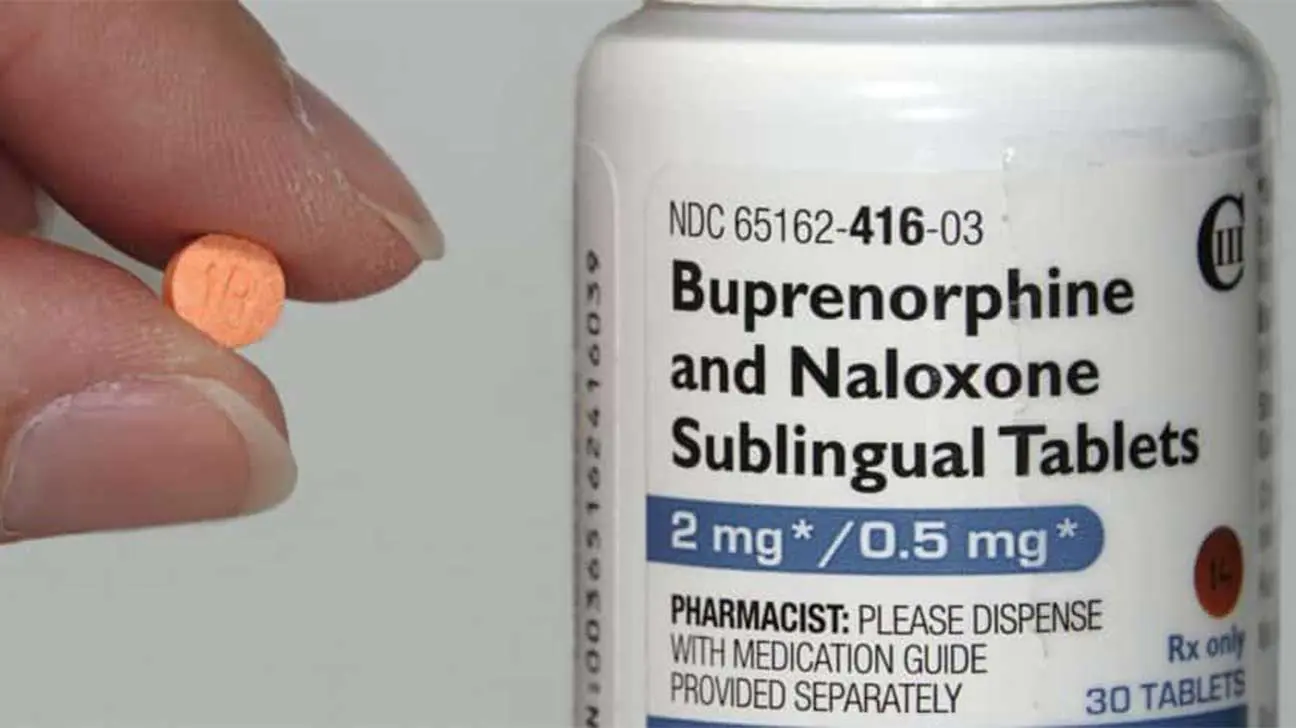
Buprenorphine is a medication approved by the U.S. Food & Drug Administration (FDA) to treat opioid use disorder, heroin addiction, and chronic pain.
Uses for buprenorphine include:
- treating opioid dependence
- reducing severity of opioid withdrawal symptoms
- medication-assisted treatment for opioid use disorder
- relieving ongoing pain caused by chronic medical conditions
Over a million people in the United States have an opioid use disorder. Buprenorphine, in conjunction with behavioral therapy, is one of the most effective, evidence-based treatments.
Learn more about medication-assisted treatment for substance abuse
How Does Buprenorphine Work?
Buprenorphine is classified as a partial opioid agonist. When taken, it binds to the same opioid receptors as other opioid drugs, but only partially. This weakens some of its effects.
Because of its chemical similarity to other opioids, buprenorphine can effectively reduce or prevent opioid withdrawal symptoms during detox and can treat opioid cravings.
Buprenorphine can be administered in an addiction rehab program, or be prescribed and dispensed in a physician’s office. This eliminates the need to visit a clinic for daily doses.
Types Of Buprenorphine
Buprenorphine is a drug that is manufactured either alone, or in combination with naloxone, which is another opioid-based medicine that can block the effects of opioids.
Buprenorphine can be prescribed either in its generic form or under a brand name. Here are brief descriptions of the different types of buprenorphine-based medications:
Butrans
Butrans is the brand name for a transdermal patch form of buprenorphine. This is generally applied to the skin once a week.
Butrans is prescribed to relieve severe, chronic pain caused by medical conditions such as arthritis and back pain. Butrans is not prescribed for the treatment of opioid use disorder.
Read more about using Butrans for opioid addiction treatment
Generic Buprenorphine
A generic version of buprenorphine/naloxone is available for the treatment of opioid dependence and opioid use disorder.
This generic form of buprenorphine comes in the form of a sublingual tablet, placed under the tongue to dissolve.
Suboxone
Suboxone is a brand name for a prescription medication for opioid use disorder. It contains both buprenorphine and naloxone.
This form of buprenorphine comes in the form of a sublingual film. Taking this medication involves placing the film under the tongue to dissolve.
Read more about using Suboxone for opioid addiction treatment
Subutex
Subutex is a brand name for buprenorphine. It comes in the form of a sublingual tablet. This is placed under the tongue to dissolve.
Subutex is used for the treatment of opioid dependence, in conjunction with counseling and psychosocial support.
Read more about taking Subutex for opioid addiction treatment
Zubsolv
Zubsolv is chemically similar to Suboxone. It contains both buprenorphine and naloxone. This drug comes in the form of a sublingual tablet, which dissolves under the tongue.
Read more about taking Zubsolv for opioid withdrawal
Buprenorphine/Naloxone Combination: What Does It Do?
Both buprenorphine and naloxone are opioid-based medications, but they have different effects.
Buprenorphine is an opioid-based medicine that can prevent opioid withdrawal symptoms and alleviate opioid cravings. Naloxone is an antagonist that blocks the effects of other opioids.
What adding buprenorphine to naloxone does:
- decreases the likelihood of buprenorphine misuse
- reduces the risk of opioid overdose
- reduces euphoric effects of buprenorphine
Read more about buprenorphine and naloxone combinations
Side Effects Of Buprenorphine
Buprenorphine and buprenorphine/naloxone products (e.g. Suboxone) can have some side effects.
Acute side effects of buprenorphine may include:
- headache
- stomach pain
- constipation
- insomnia
- nausea and vomiting
- dizziness
- drowsiness
- dry mouth
- dilated pupils
- blurred vision
- sweating
- muscle aches
- cramps
Serious side effects, including difficulty breathing, swelling, and itching can occur.
If you or a loved one is experiencing serious side effects after taking buprenorphine, contact your doctor right away for further guidance.
Read more about the side effects of buprenorphine
Long-Term Side Effects Of Buprenorphine
Buprenorphine can become habit-forming with chronic use. Over time, a doctor may need to adjust a person’s dosage to ensure they are achieving the desired effect of the drug.
Potential long-term side effects can include:
- physical dependence
- psychological dependence
- difficulty falling or staying asleep
- adrenal insufficiency (hormonal)
- changes in weight
Long-term use of buprenorphine for opioid dependence can be safe. While receiving treatment with buprenorphine, a doctor will monitor individuals for any drug-related health concerns.
Liver Damage With Buprenorphine
The misuse of buprenorphine can cause acute liver injury or liver damage. If you’re taking buprenorphine for opioid dependence or pain, a doctor may order tests to monitor liver function.
Read more about how buprenorphine affects the liver
Increased Blood Pressure With Buprenorphine
Buprenorphine can have effects on blood pressure. Research shows that buprenorphine may decrease diastolic and systolic blood pressure. This can cause low blood pressure.
Read more about how buprenorphine can affect blood pressure
Sleep Troubles With Buprenorphine
Difficulty falling or staying asleep is a commonly reported symptom among people who take buprenorphine. Sleep troubles can occur with short-term and chronic buprenorphine use.
Read more about how taking buprenorphine can affect sleep
Buprenorphine Dosage
Buprenorphine is prescribed at multiple dosage amounts. These dosage amounts vary depending on the type of buprenorphine and pre-existing opioid tolerance of the person receiving it.
Dosing for buprenorphine:
- generic buprenorphine/naloxone: 2–8 mg
- Suboxone: 2–12 mg
- Subutex: 2–8 mg
- Butrans: 5–20 mcg/hr
Dosage amounts for buprenorphine drugs will be determined based on each individual’s personal needs. The dosage of buprenorphine administered may be adjusted over time.
When To Take Buprenorphine
Buprenorphine may be administered on a daily or weekly basis. This will depend on the type of buprenorphine drug a person is taking—e.g. sublingual tablet, film, or transdermal patch.
The initiation of buprenorphine treatment is recommended 12-24 hours after last use of a short-acting opioid, or 24 to 48 hours after long-acting opioid use.
How Often To Take Buprenorphine
The question of, “how often do I take buprenorphine?” is common. The frequency in which a person should be taking buprenorphine is determined on an individual basis.
Some forms of buprenorphine are taken daily, or several times a week. Other forms, such as the transdermal patch (Butrans) for chronic pain, may be prescribed for use once a week.
Read more about how often to take buprenorphine
Factors That Can Affect Buprenorphine Dosing
Various factors can affect the dose of buprenorphine a person receives, and how often a person is directed to take it.
Factors that can affect buprenorphine dosing include:
- how long someone has been taking buprenorphine
- pre-existing opioid tolerance
- moderate to severe opioid dependence
- history of opioid misuse
- co-occurring health conditions
- impaired liver or kidney function
Buprenorphine Interactions
Buprenorphine can interact with other substances and prescription medications.
Before taking buprenorphine, tell your doctor if you are taking:
- supplements (including herbal)
- prescription medications
- over-the-counter medications
- non-prescribed drugs
Drinking alcohol while taking buprenorphine is not recommended.
Read more about how drugs can interact with buprenorphine
Benefits Of Buprenorphine For Treating Opioid Addiction
Medication-assisted treatment (MAT) is the most effective treatment for opioid dependence and addiction. Buprenorphine is one of three medications FDA-approved for MAT.
Benefits of buprenorphine for opioid addiction include:
- reduced opioid/heroin cravings
- reduced risk of opioid overdose
- reduced opioid misuse
- increased likelihood of continuing addiction treatment
- reducing/preventing discomfort of opioid withdrawal
- safe for long-term management of opioid use disorder
For people with a history of opioid dependence and addiction, buprenorphine can be life-changing.
The use of buprenorphine can help individuals overcome opioid addiction and build a healthy life in recovery.
Buprenorphine FAQs
Having questions about prescription medications like buprenorphine is common. Find answers to some of the most frequently asked questions about buprenorphine.
❓ What Type Of Drug Is Buprenorphine?
✔️ Buprenorphine is classified as a partial opioid agonist and depressant. This means it slows activity in the central nervous system and acts on certain opioid receptors in the body.
Unlike full opioid drugs, like morphine or oxycodone, buprenorphine does not fully activate the body’s opioid receptors. This weakens its respiratory and euphoric effects.
❓ How Long Does It Take For Buprenorphine To Kick In?
✔️ Buprenorphine starts to work within 30 to 60 minutes after ingestion. Effects of buprenorphine can last between 24 to 60 hours after use, depending on the dose and formulation.
❓ Can Buprenorphine Be Used For Pain?
✔️ Yes. Because of its analgesic effects, buprenorphine can be prescribed for pain management, in addition to treatment for opioid dependence, opioid withdrawal, and opioid use disorder.
❓ Can Buprenorphine Cause A High?
✔️ Buprenorphine can cause mild euphoria with moderate to high doses. Drugs that contain both buprenorphine and naloxone (e.g. Suboxone) have reduced euphoric effects.
Because of how buprenorphine affects the brain, it is less likely to cause a “high” in moderate doses than the illicit opioid heroin or prescription opioids like OxyContin and Vicodin.
❓ Buprenorphine VS Methadone: What’s The Difference?
✔️ Buprenorphine and methadone are two FDA-approved medications for opioid use disorder, but they are not the same.
Methadone is an older drug than buprenorphine, has a different mechanism of action, and can cause different side effects.
❓ Is Buprenorphine The Same As Suboxone?
✔️ Buprenorphine is an ingredient in Suboxone. Suboxone also contains naloxone, making it distinct from other drugs (including generic) that contain only buprenorphine.
Suboxone is prescribed for opioid dependence and opioid use disorder. Not all forms of buprenorphine alone are prescribed for opioid use disorder (e.g. transdermal patch).
❓ How Long Will I Be On Buprenorphine?
✔️ The length of time that someone is directed to take buprenorphine will depend on the recommendations of their doctor or treatment team.
Buprenorphine treatment is highly personalized. It can take time to find the right dose, and for a doctor to determine a recommended treatment length. This can be weeks, months, or years.
Stopping buprenorphine treatment prematurely is a risk factor for opioid relapse. It’s highly recommended that those who take buprenorphine adhere to medical guidance from their doctor.
Call Today To Learn More About Buprenorphine Treatment
Buprenorphine is a leading treatment for opioid dependence and addiction. If you or a loved one is addicted to heroin or prescription opioids, we can help connect you with treatment.
By calling us, we can:
- explain buprenorphine treatment options
- find buprenorphine treatment options near you
Begin the journey towards addiction recovery today. Call our helpline to learn more about buprenorphine treatment and to find an addiction treatment program that’s right for you.
Addiction Resource aims to provide only the most current, accurate information in regards to addiction and addiction treatment, which means we only reference the most credible sources available.
These include peer-reviewed journals, government entities and academic institutions, and leaders in addiction healthcare and advocacy. Learn more about how we safeguard our content by viewing our editorial policy.
- American Family Physician — Managing Opioid Addiction with Buprenorphine
https://www.aafp.org/afp/2006/0501/p1573.html - American Journal of Managed Care—FDA Approves First Generic Version of Suboxone for Opioid Dependence
https://www.ajmc.com/view/fda-approves-first-generic-version-of-suboxone-for-opioid-dependence - Substance Abuse And Mental Health Services Administration (SAMHSA)—Buprenorphine
https://www.samhsa.gov/medication-assisted-treatment/medications-counseling-related-conditions/buprenorphine - U.S. National Center for Biotechnology Information (NCBI Bookshelf)—Buprenorphine - LiverTox
https://www.ncbi.nlm.nih.gov/books/NBK548871/ - U.S. National Institute on Drug Abuse (NIDA)—Medications to Treat Opioid Use Disorder Research Report
https://www.drugabuse.gov/download/21349/medications-to-treat-opioid-use-disorder-research-report.pdf?v=99088f7584dac93ddcfa98648065bfbe - U.S. National Library of Medicine: MedlinePlus—Buprenorphine Transdermal Patch
https://medlineplus.gov/druginfo/meds/a613042.html


